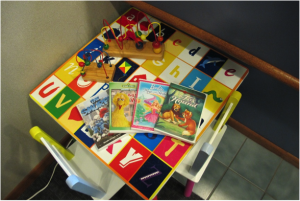By: Dr. Elizabeth Eggert
Maintaining good oral hygiene at home is one of the most important things you can do for your teeth and gums. Healthy teeth not only enable you to look and feel good, they make it possible to eat and speak properly. Good oral health is important to your overall well-being.
Daily preventive care, including proper brushing and flossing, will help stop harmful bacteria from attaching themselves to the teeth and the tissues. If given the opportunity, these bacteria will cause decay, gingivitis, and periodontal (gum) disease.
What is the best way to brush?
Brush your teeth at least twice a day, for at least two minutes. Use a soft or extra soft-bristled brush. Or, use a sonic or electric toothbrush. Make sure your brush’s head is not too large; the head should fit easily into the mouth and allow you to reach all areas without hurting your cheek or tongue. Use toothpaste that contains fluoride. The fluoride can help keep the teeth strong and can reverse cavities in their early stages. If you have sensitive teeth, ask us about using desensitizing toothpaste with fluoride. These toothpastes can work in certain situations.
When brushing, place your toothbrush at a 45-degree angle with the bristles into the gum tissues. Move the brush in an elliptical or circular motion. Brush the outer tooth surfaces, the inner tooth surfaces, and the chewing surfaces. Hold the brush vertically and use the “toe” of the brush to clean the inside surfaces of the front teeth, moving in an up-and-down manner. Finally, brush your tongue to remove bacteria and freshen your breath.
What is the best way to floss?
Cleaning between the teeth once a day with floss is essential in preventing decay and gum disease. There are many areas in the mouth where the toothbrush just can’t reach. Usually, these areas are better cleaned with floss.
When flossing, break off about 18 inches of floss and wind most of it around one of your middle fingers. Wind the remaining floss around the same finger of the opposite hand. This opposite finger will take up the floss as it gathers the bacteria from your mouth. Hold the floss tightly between your thumbs and forefingers. Guide the floss between your teeth using a gentle rubbing motion. Try to avoid snapping the floss into the gums, as that can injure the gum tissue.
When the floss reaches the gum line, curve it into a C-shape against one tooth. Gently slide it into the space between the gum and the tooth. Hold the floss tightly against the tooth. Gently rub the side of the tooth, moving the floss away from the gum with up and down motions. Repeat this method for the rest of your teeth. Finally, don’t forget the back side of your last tooth.
Is there anything else I can use to clean my mouth?
Depending on your situation, you may benefit from a mouth rinse, used daily. Antimicrobial mouth rinses, like Listerine, reduce bacteria and plaque activity, helping to prevent gingivitis and gum disease. Fluoride mouth rinses, like ACT, help reduce and prevent tooth decay.
For patients with signs and symptoms of gum disease, we will often recommend a rubber tip or proxy brush to clean more effectively in the gum tissue. Typically, the best use of these tools is to hold the tip vertically with the long axis of the tooth and remove the plaque along the gum line and in between the teeth. For more specific instructions related to your particular situation, be sure to ask us.
For patients with bridges or fixed retainers, it is important to use a floss-threader to get the floss under these fixtures and help clean in between the teeth.
For patients missing teeth or for those who have a removable partial denture, it can help to use gauze to remove plaque on a tooth where there is no adjacent tooth. We suggest using a 2×2 size piece of gauze, opened up and folded the long way. Use the gauze along the side of the tooth like you would a beach towel when drying off your body.
And of course, be sure to visit us for your recommended maintenance appointments. By maintaining professional cleanings at your recommended interval, we can monitor your home progress and help you achieve optimum oral health.
